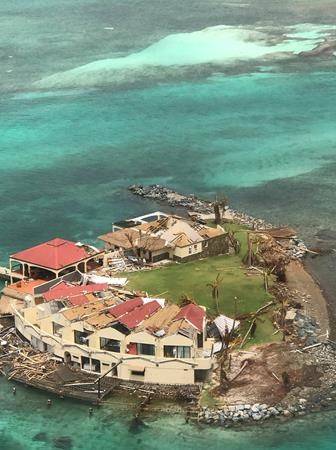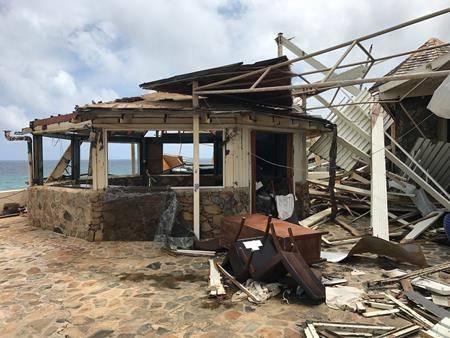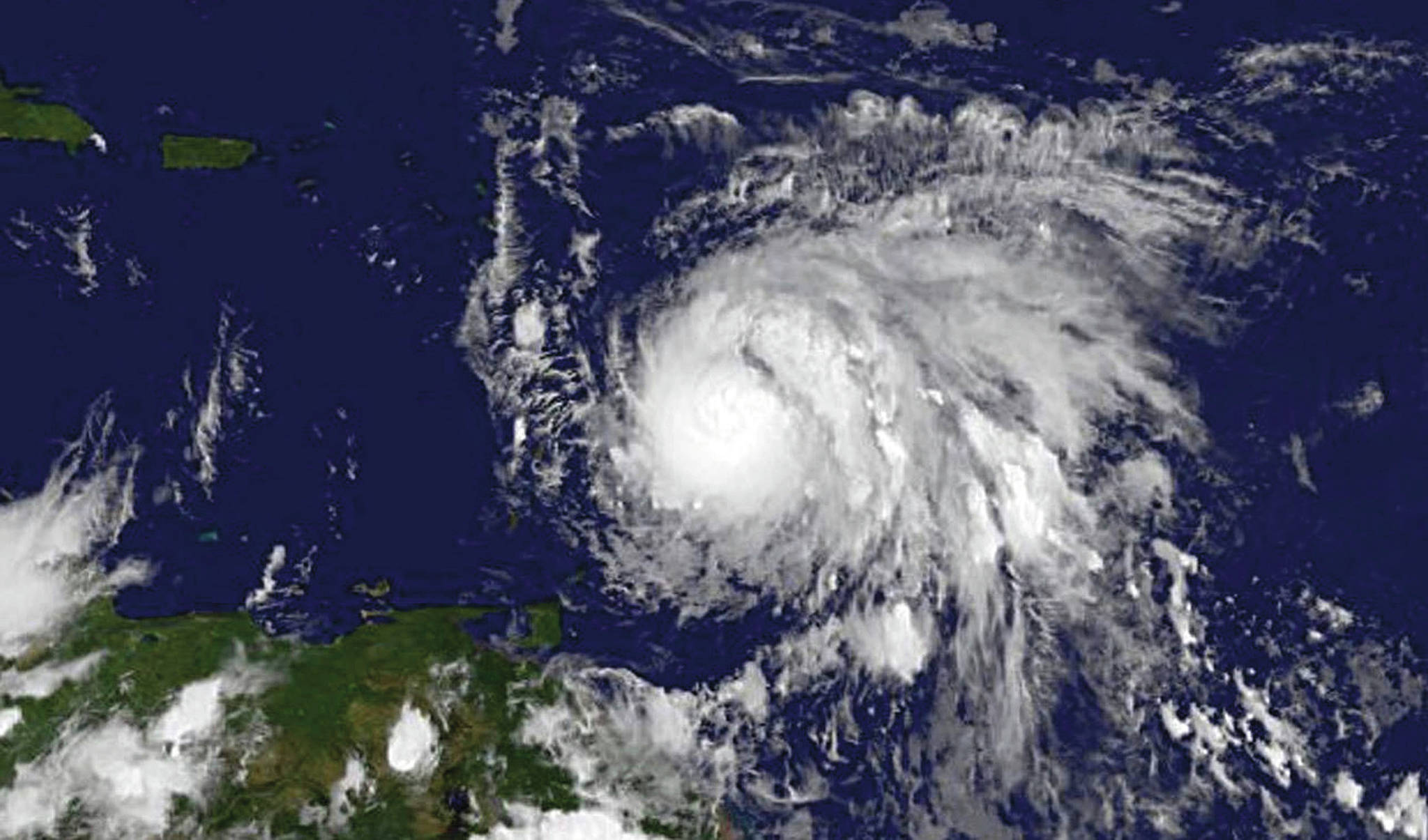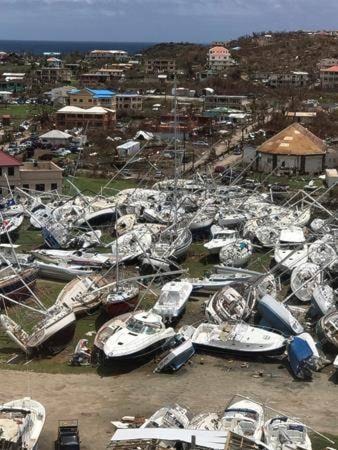SAN JUAN, Puerto Rico — Hurricane Maria grew into an extremely dangerous Category 4 storm Monday as it barrelled toward a potentially devastating collision with islands in the eastern Caribbean, and forecasters warned it was likely to become even stronger.
The storm’s eye was expected to pass near Dominica later in the day on a path that would take it near many of the islands already wrecked by Hurricane Irma and then on toward a possible direct strike on Puerto Rico on Wednesday.
“This storm promises to be catastrophic for our island,” said Ernesto Morales with the U.S. National Weather Service in San Juan. “All of Puerto Rico will experience hurricane force winds.”
The U.S. territory imposed rationing of basic supplies including water, milk, baby formula, canned food, batteries and flashlights.
The U.S. National Hurricane Center said Maria had maximum sustained winds of 130 mph (215 kph) in late afternoon. It was centred about 35 miles (55 kilometres) northeast of Martinique and 45 miles (70 kilometres) east-southeast of Dominica, and was heading west-northwest at 9 mph (15 kph).
The centre said Maria would likely continue to gain strength for the next 24 hours or longer and could reach Category 5 status.
Hurricane warnings were posted for the U.S. and British Virgin Islands, Puerto Rico, Guadeloupe, Dominica, St. Kitts, Nevis, Montserrat and Martinique. A tropical storm warning was issued for Antigua and Barbuda, Saba, St. Eustatius, St. Maarten, St. Lucia and Anguilla.
Forecasters said storm surge could raise water levels by 6 to 9 feet (1.8 to 2.7 metres) near the storm’s centre. The storm was predicted to bring 10 to 15 inches (25 to 38 centimetres) of rain across the islands, with more in isolated areas.
Officials in Dominica closed schools and government offices and urged people to evacuate and seek shelters.
“We should treat the approaching hurricane very, very seriously,” Prime Minister Roosevelt Skerrit said. “This much water in Dominica is dangerous.”
The small, mountainous island could be in trouble even if spared the storm’s strongest winds. In August 2015, Tropical Storm Erika unleashed flooding and landslides that killed 31 people and destroyed more than 370 homes.
Officials in Guadeloupe said the French island would experience extremely heavy flooding starting in the afternoon and warned that many communities could be submerged overnight.
In nearby Martinique, authorities ordered people to remain indoors and said they should be prepared for power cuts and disruption in the water supply. All schools and non-essential public services were closed.
The storm’s hurricane-force winds extended out about 25 miles (35 kilometres) from the eye, and tropical storm-force winds out as far as 125 miles (205 kilometres).
The current forecast track would carry it about 22 miles (35 kilometres) south of St. Croix in the U.S. Virgin Islands late Tuesday and early Wednesday, according to territorial Gov. Kenneth Mapp.
“We are going to have a very, very long night,” Mapp said as he urged people in the territory to finish any preparations.
St. Thomas and St. John are still recovering from a direct hit by Hurricane Irma, which did extensive damage and caused four deaths on the two islands.
Officials and islanders were also bracing in Puerto Rico, which did not take a direct hit from Irma but still saw blackouts across much of the territory. Nearly 70,000 people remain without power, and Gov. Ricardo Rossello warned that more widespread outages are likely with Maria.
Forecasters said the storm would dump up to 18 inches (46 centimetres) of rain across Puerto Rico and whip the U.S. territory with heavy winds for 12 to 24 hours.
Officials said the Federal Emergency Management Agency was ready to bring drinking water and help restore power in Puerto Rico immediately after the storm.
Traffic was heavy Monday as people rushed to buy last-minute items. Among them was 70-year-old retiree Rafael Rivera, who clutched a small bag of dog treats for his dog and six puppies at home.
“This storm is coming with some bad intentions,” he said at a San Juan store where some shoppers grumbled about empty shelves.
Rossello said Puerto Rico had prepared about 450 shelters capable of taking in up to 125,000 people in a worst-case scenario. Nearly 200 people are still in shelters due to Hurricane Irma. Classes were cancelled and government employees were to work only a half-day.
Farther north, long-lived Hurricane Jose continued to head northward well away from the U.S. East Coast but causing dangerous surf and rip currents. It was not expected to make landfall, but a tropical storm warning was in effect for coastal areas in Rhode Island and Massachusetts. Tropical storm watches were posted for parts of New York’s Long Island and Connecticut.
Jose was centred about 250 miles (405 kilometres) east of Cape Hatteras, North Carolina, and was moving north at 10 mph (17 kph). It had maximum sustained winds of 75 mph (120 kph).
Seawater washed over parts of North Carolina’s Outer Banks as Jose passed, and five people were knocked off a coastal jetty in Rhode Island by high surf caused by the storm. Officials said rescuers had to fight through rough surf to load the injured onto stretchers and get them to shore. All five were hospitalized.
In the Pacific, Tropical Storm Norma’s threat to Mexico’s Los Cabos resort area at the southern end of the Baja California Peninsula eased as forecasters said it was moving away from shore and expected to weaken.
Meanwhile, Tropical Storm Lee weakened into a tropical depression far out in the Atlantic and Hurricane Otis became a tropical storm far out in the Pacific. Neither threatened land.



